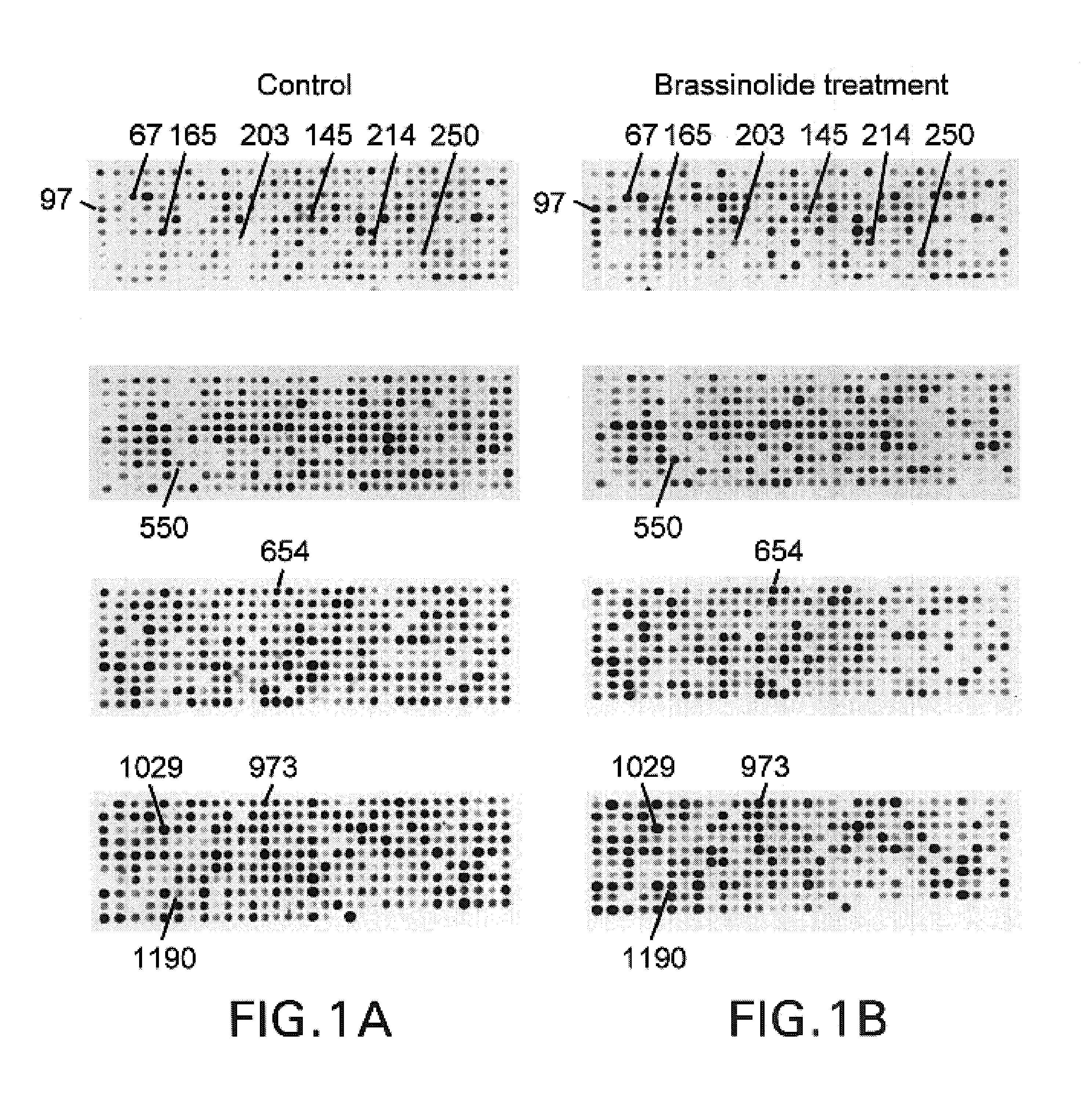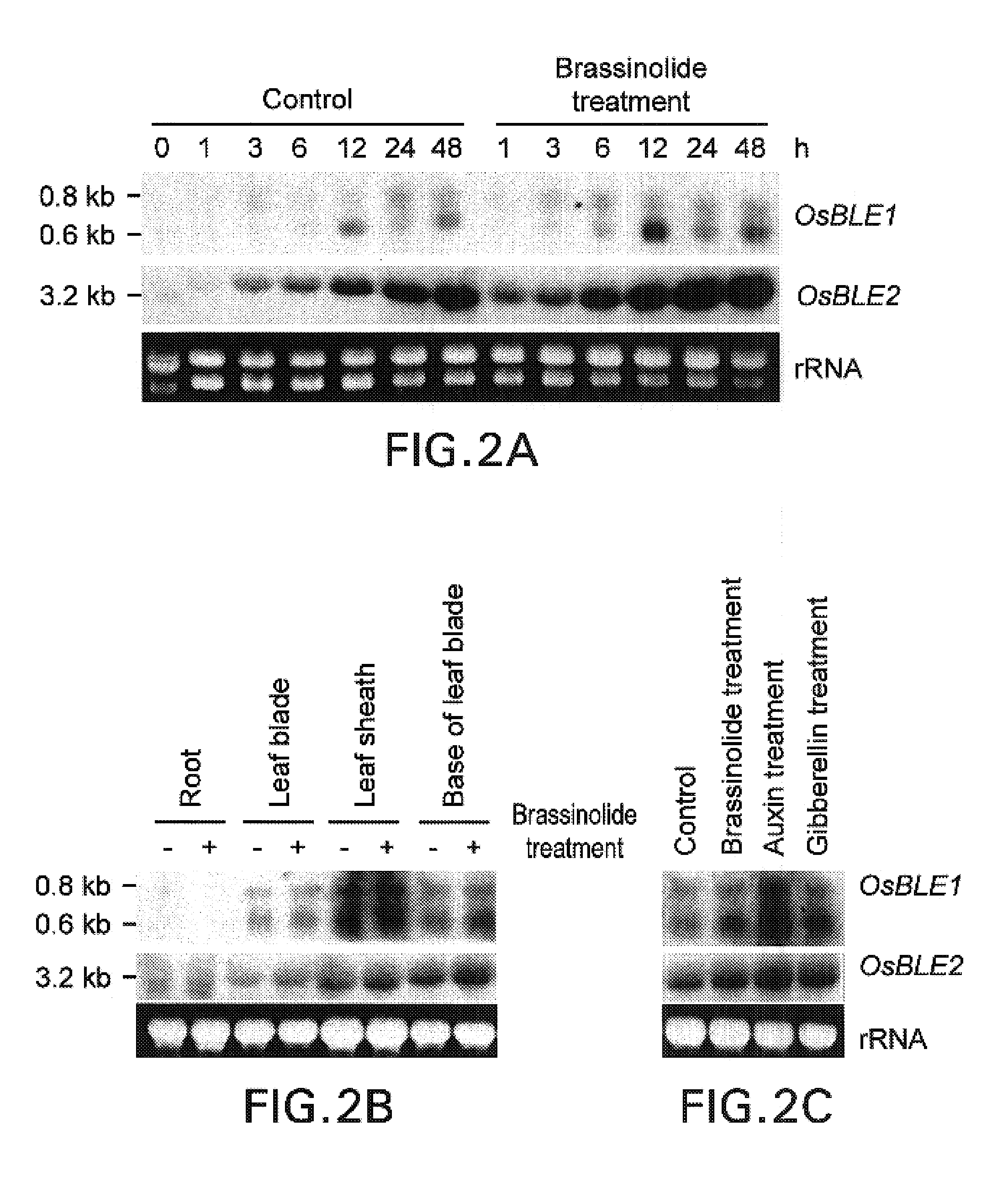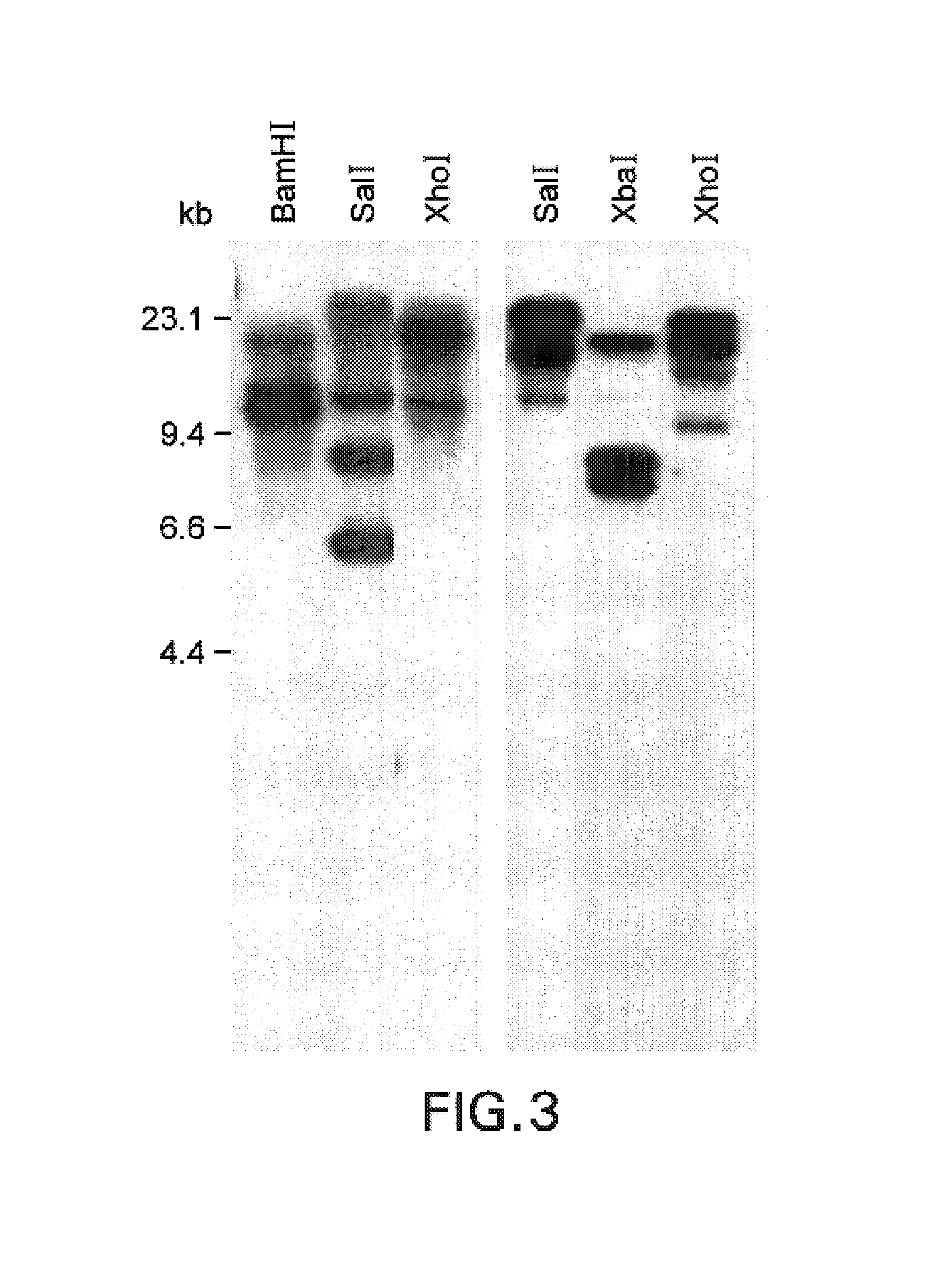Plant brassinolide responsive genes and use thereof
- Summary
- Abstract
- Description
- Claims
- Application Information
AI Technical Summary
Benefits of technology
Problems solved by technology
Method used
Image
Examples
example 1
[0076]Total RNA was extracted from the base of leaf blades of rice (Nipponbare) seedling treated with 1 μM brassinolide, and the RNA was analyzed using cDNA microarrays containing 1265 rice genes. The results indicated that expression level of the 12 different genes markedly increased depending on the concentration of brassinolide (FIGS. 1A and 1B). EST (expression tag) clones for use were obtained in the Rice Genome Project of the Ministry of Agriculture, Forestry, and Fisheries of Japan and are available from the homepage thereof. Most of the EST clones had cDNAs with unknown functions. Thus, it was impossible to predict, from only their partial cDNA sequences, whether expression increase of the 12 genes depends on the presence of brassinolide.
[0077]Total RNA was extracted from the base of leaf blades of rice (Nipponbare) seedling treated with 1 μM brassinolide, and the RNA was analyzed using cDNA microarrays containing 1265 rice genes. The results indicated that expression level ...
example 2
[0078]The expression patterns of the 12 genes were analyzed by Northern blotting. The present inventors then found two genes whose expression occurs one to six hours after brassinolide treatment and was increased in the leaf sheath and the base of leaf blades by auxin and brassinolide treatment (FIGS. 2A–2C). The present inventors named these two genes OsBLE1 and OsBLE2.
example 3
[0079]The present inventors isolated full length OsBLE1 and OsBLE2 cDNAs using the 5′ RACE method based on the EST information and found that OsBLE1 comprised 598 nucleotides (SEQ ID NO: 1) encoding 81 amino acids (SEQ ID NO: 2) and that OsBLE2 comprised 3243 nucleotides (SEQ ID NO: 3) encoding 761 amino acids (SEQ ID NO: 4). The present inventors found no significant sequence homology between amino acid sequences predicted from the genes and that in the database. Therefore, both genes found were novel.
PUM
| Property | Measurement | Unit |
|---|---|---|
| Responsivity | aaaaa | aaaaa |
Abstract
Description
Claims
Application Information
 Login to View More
Login to View More - R&D
- Intellectual Property
- Life Sciences
- Materials
- Tech Scout
- Unparalleled Data Quality
- Higher Quality Content
- 60% Fewer Hallucinations
Browse by: Latest US Patents, China's latest patents, Technical Efficacy Thesaurus, Application Domain, Technology Topic, Popular Technical Reports.
© 2025 PatSnap. All rights reserved.Legal|Privacy policy|Modern Slavery Act Transparency Statement|Sitemap|About US| Contact US: help@patsnap.com



